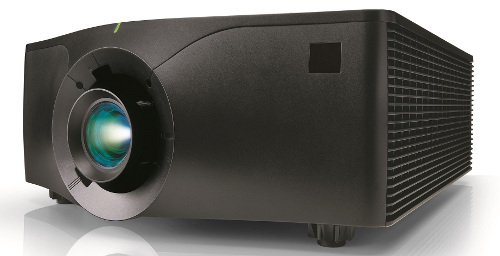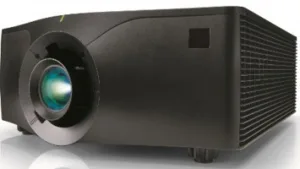Christie has released four new projectors in a GS series which we reported on briefly at the Prolight & Sound event (Christie Highlights Reduced Noise of L/P Projectors). These are single-chip DLP models with a laser phosphor light source. What is a bit different about them is the color gamut, which meets the Rec. 709 HD TV standard, which can be tricky with 1-chip DLP projectors. Christie calls the new technology used to achieve this “BoldColor” and it is implemented on two of the new GS series models.

The two new GS projectors (850-GS) with BoldColor are offered in 1920 x1080 and 1920 x 1200 resolution models with 6,900 and 7,500 lumens respectively. More advanced than previous GS models, the four professional-grade models use a grid-based warping and blending processor and also have an option for camera-based warping, blending or stacking to make setups faster and simpler.
Laser Phosphor models offer many advantages over lamp-based models including the ability to be rotated 360-degrees and used in portrait orientation. They have fast start up and shut down and much longer lifetimes than lamps (20k hours, presumable to 50% of initial brightness). Projector noise is pretty low too at 35 dBA.
“Designed primarily for a digital workflow, the new models have a 3GSDI, DVI-D and two HDMI inputs but still allow for analog signal via an HD15 connection making the new GS models a perfect fit for live events and fixed installs,” noted Christie product manager, Curtis Lingard.
Analyst Comment
We asked Christie to set up an interview to discuss the BoldColor technology, but this was not done prior to our press deadline. BoldColor is also in use on the company’s HS series projectors which are offered in 1920 x 1080 or 1920 x 1200 resolution models with 12,000 ANSI lumens.
In general, the laser phosphor sources have a spectral profile similar to UHP lamps so they are a bit weak in the red. Achieving a Rec. 709 or even a DCI-P3 color gamut is possible, but it requires significant filtering which reduces the optical efficiency of the projector. This typically means you can get the wide color gamut, but you sacrifice a lot of brightness.-CC

